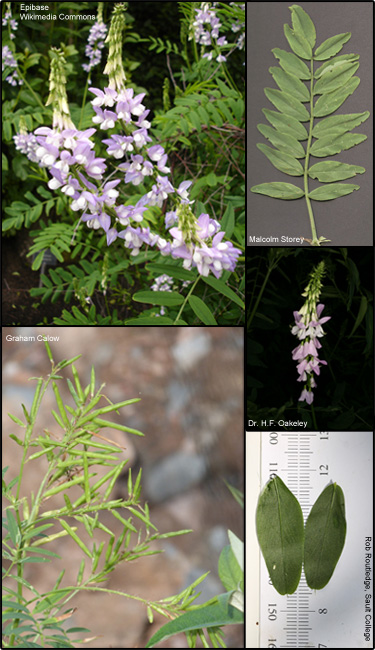Goatsrue (Galega officinalis)
 Description: Introduced to the western United States in the late 1800s as a possible forage crop. This species is listed on the USDA Federal Noxious Weed List.
Description: Introduced to the western United States in the late 1800s as a possible forage crop. This species is listed on the USDA Federal Noxious Weed List.Habit: Capable of forming dense crowns that can regenerate for several seasons.
Leaves: Pinnately compound, up to 22 cm long with 11-17 elliptic to lanceolate leaflets, 1-5 cm. long.
Stems: Glabrous and reaching a height of 30-50 in.
Flowers: Inflorescence of 20-50 purple to white flowers, about 1 cm. long, arranged in terminal or axillary racemes.
Fruit and seeds: Cylindrical pod, 2-4 cm. long with up to 9 seeds. Seeds are dull, mustard yellow, oblong and 2.5-3 mm. long.
Habitat: Native to southern Europe and western Asia. Can be found in stream banks and moist areas.
Reproduction: By seed.
Similar species: Crown vetch (Securigera varia).
Monitoring and rapid response: Can be controlled using 2,4-D with dicamba. Cutting and mowing have been shown to not be effective control methods. Capable of flowering a producing seeds on short branchs that develop after cutting several times. Credits: The information provided in this factsheet was gathered from the Pennsylvania Department of Agriculture Bureau of Plant Industry Weed Circular No. 22 .
Individual species images that appear with a number in a black box are courtesy of the Bugwood.org network (http://www.invasive.org). Individual photo author credits may not be included due to the small display size of the images and subsequent difficulty of reading the provided text. All other images appear courtesy of Google (http://images.google.com).
